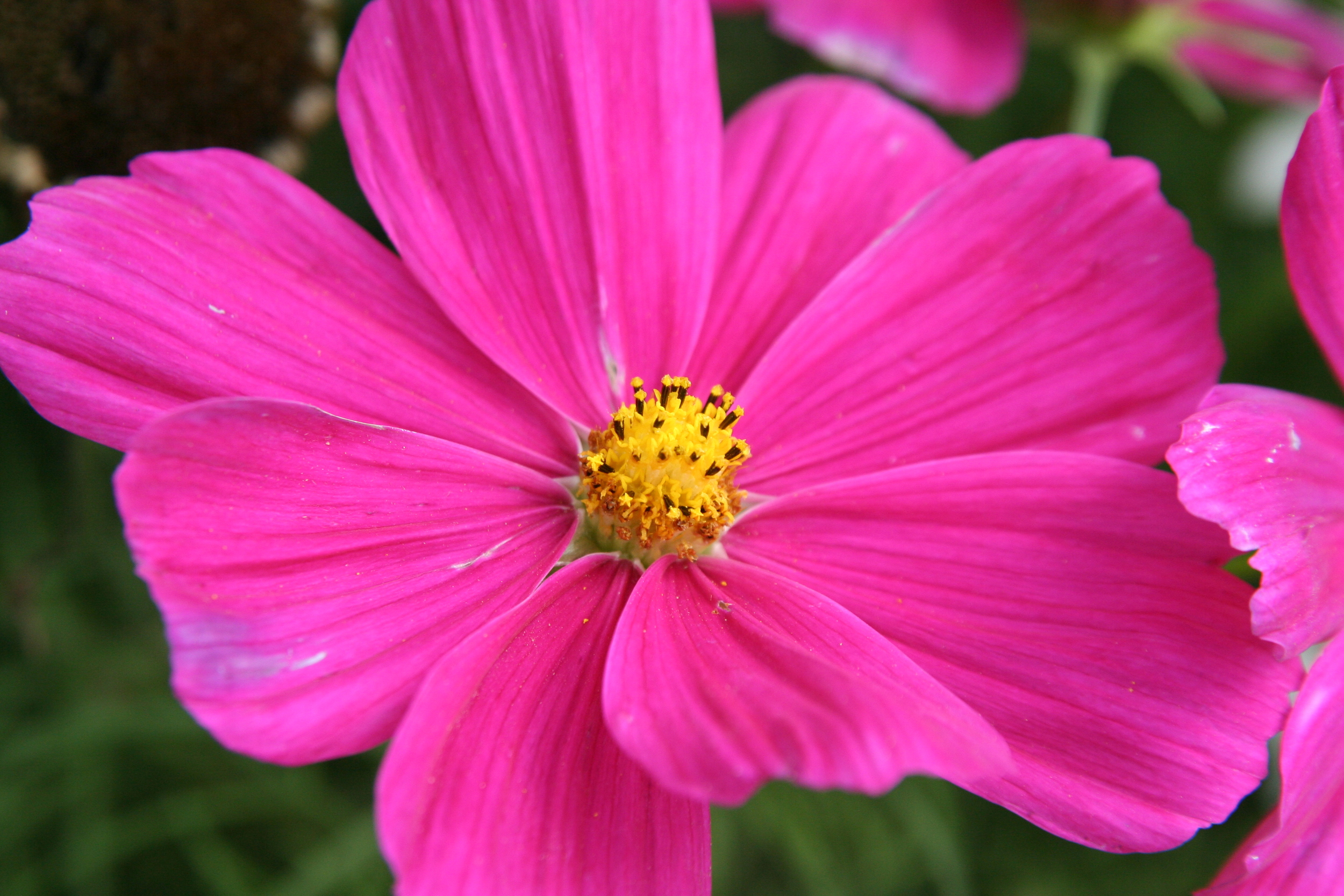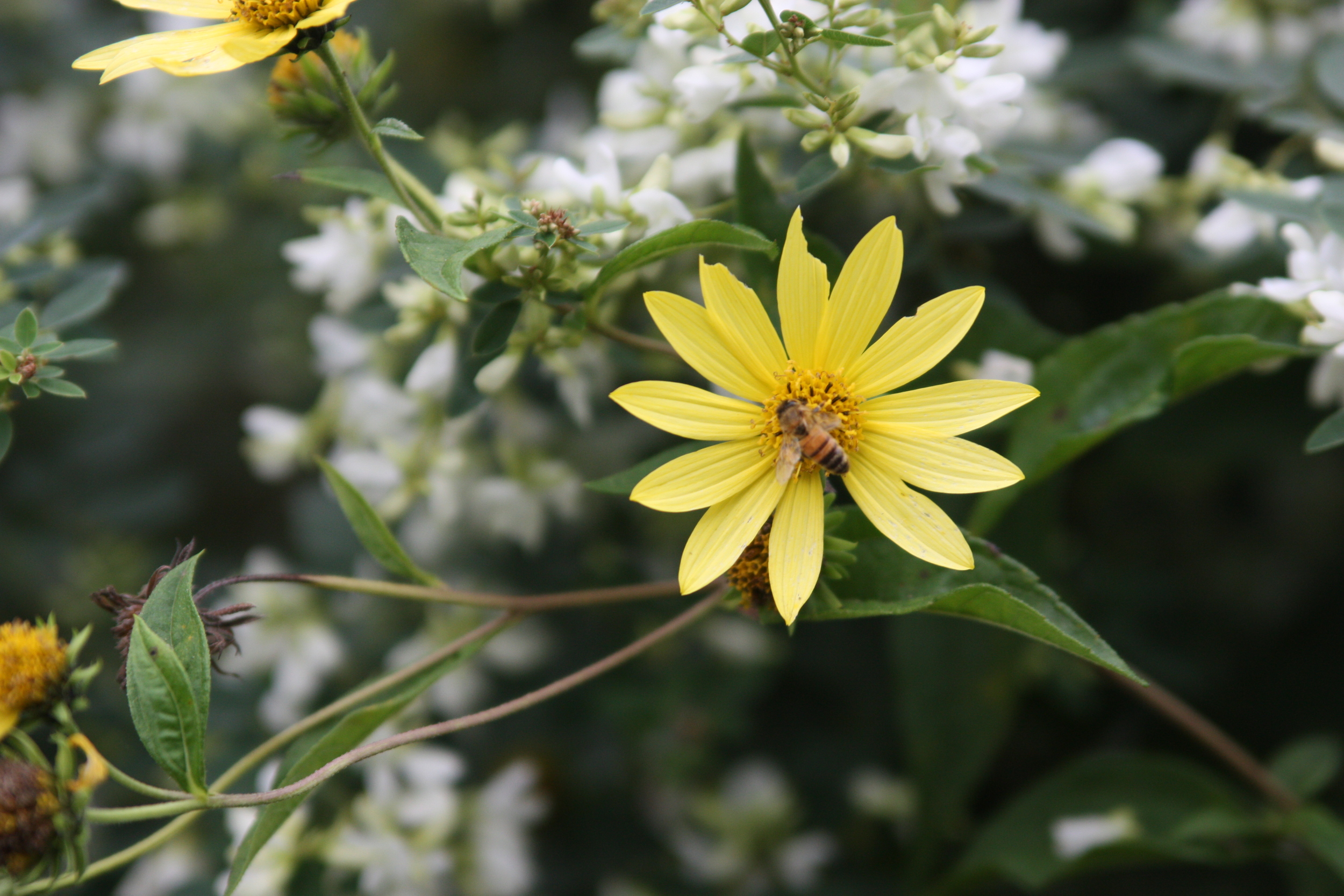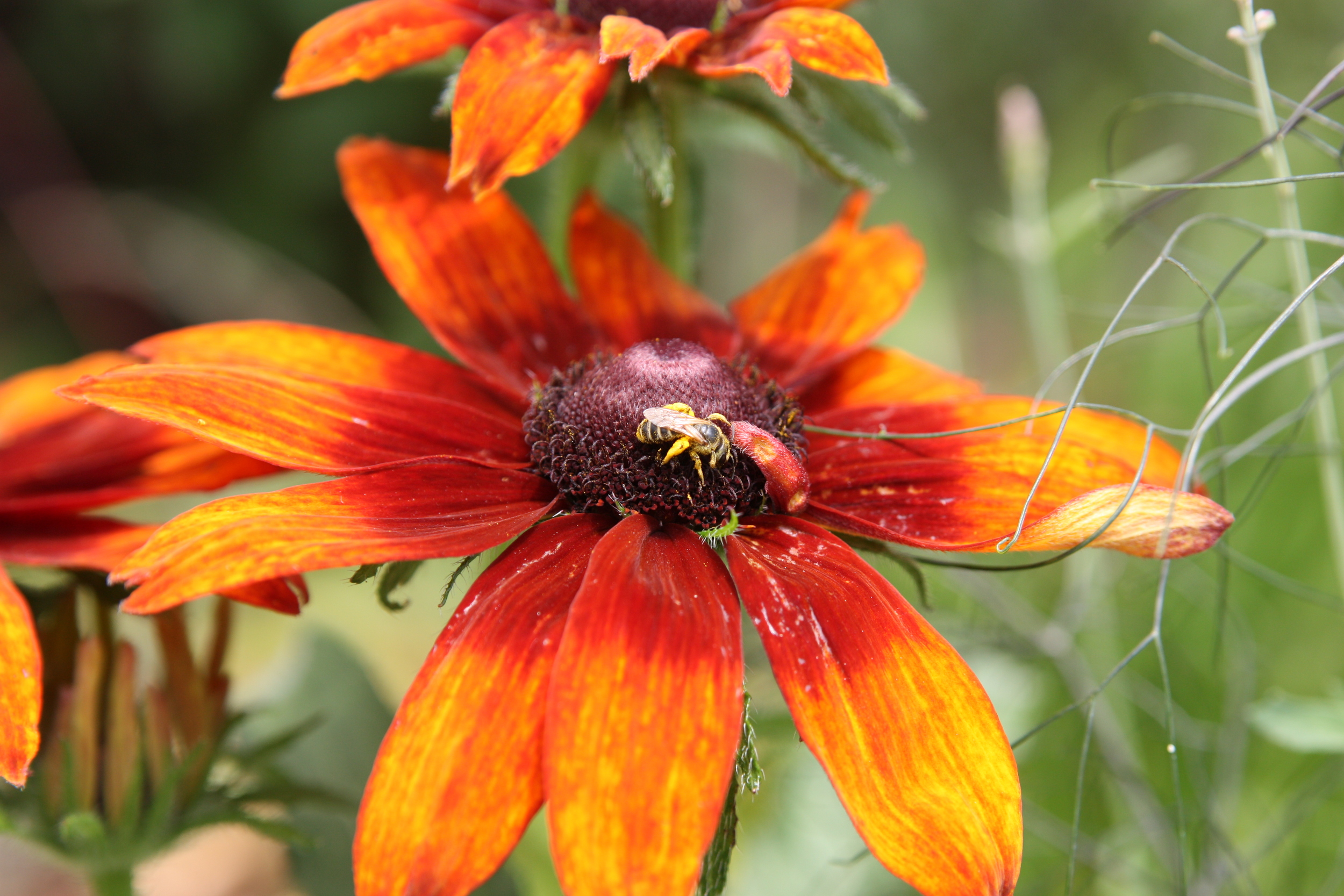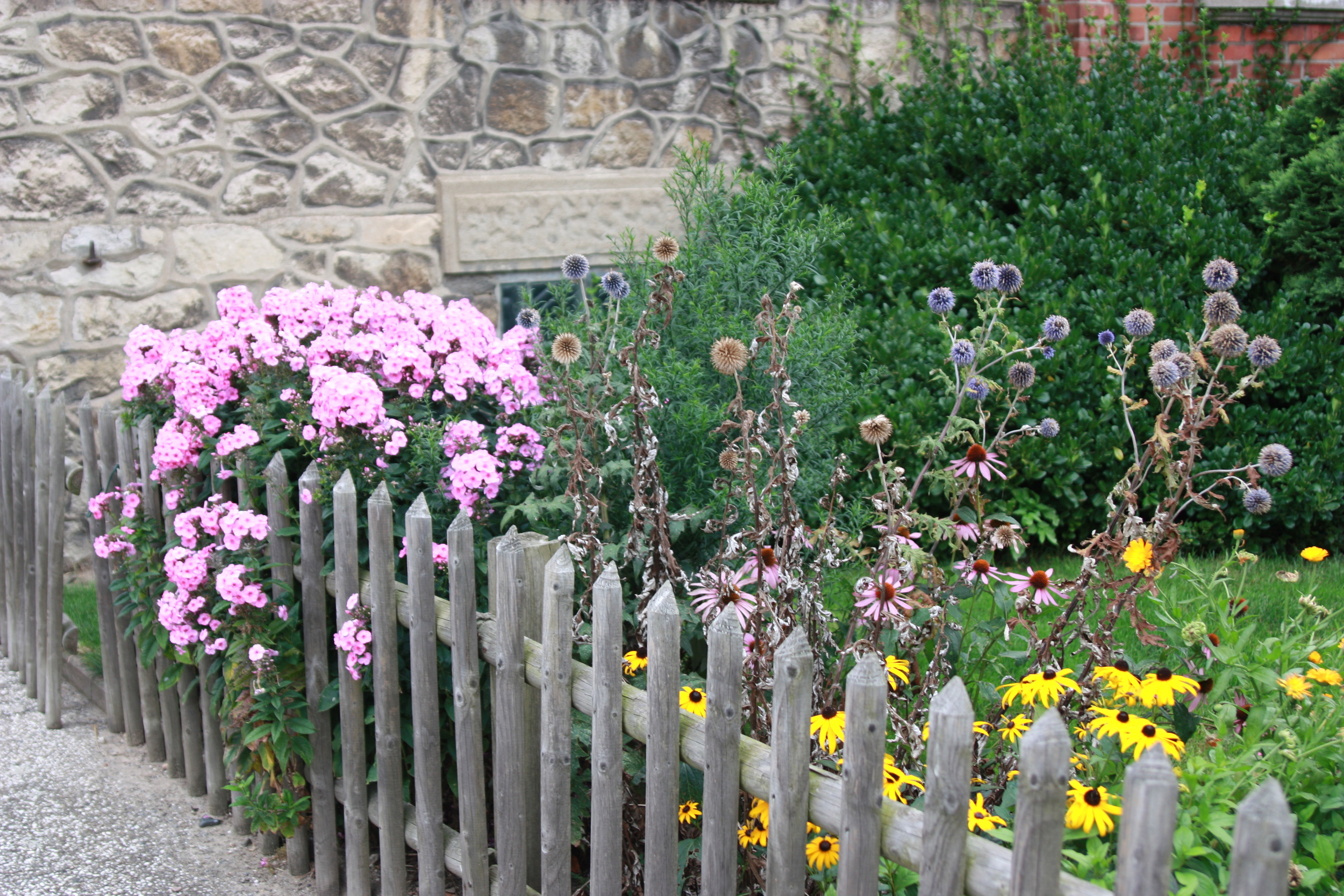For my soon-to-be-released bee article appearing in The American Gardener magazine, I was fortunate to have interviewed the amazing Dr. Gordon Frankie, native bee expert extraordinaire and professor at Professor of Urban entomology at UC Berkley. His Urban Bee Lab website and new book California Bees & Blooms: A Guide for Gardeners and Naturalists fuel bee lovers with the knowledge and tools to create bee habitats at home and ultimately fight what he refers to as "bee deserts". These are bee-free areas created by poor local garden culture and bad planting choices, something gardeners can easily combat.
And flower power is necessary to preserve the huge natural, agricultural and economic benefits bees provide. According to Dr. Frankie, “Habitat destruction is harming our bees the most. Before development destroyed and fragmented our natural areas, there were fields and fields of wildflowers. Bee pastures were everywhere. Now almost all are gone. If gardeners don't recreate them at home, bees starve."
Frankie's awareness of bee deserts arose from his studies of bee populations in urban habitats. In his research, he found that bee density and diversity correlated to differences in garden culture and plantings among cities, resulting in either bee havens or desertous barrens. Extensive bee sampling trips across California showed stark differences in populations among major metropolitan regions.
“Not everyone likes bees, but when it comes to natives there is little to fear. Most are solitary and don’t or can’t sting. Stinging is for defending a hive. Bumbles can sting but rarely do. People often confuse aggressive, hive-forming, meat-eating yellow jackets and wasps with vegetarian bees. But don’t worry. Bringing flowers into your yard won’t invite these bad guys.”
For example, San Diego is a bee desert, according to Frankie. “We have conducted numerous sampling trips and find little in the way of bees there,” he told us. In contrast, Santa Cruz and Berkley have the richest diversity in bee species in the state of California. He attributes the difference in the regional plant culture of nurseries, landscapers and gardeners. Areas where landscapes have repeat plantings of the same simple, low-maintenance plants with low habitat value consistently show very low bee counts. In contrast, communities with diverse gardens and landscapes with lots of native blooming plants contain lots of diverse bees and other pollinators.
“It’s truly a cultural problem,” says Frankie. “Lose the agapanthus and evergreens and choose high-value flowering plants instead!” This starts with what local nurseries stock. When they stock the good stuff, gardeners buy and plant it.
And bee plants tend to be as interesting and cool as the people that plant them. “Gardeners need to discover how beautiful and valuable native bee plants and bees are. It doesn't take much. In our area, a gardener created a 30 x 30 foot bee garden where we identified 68 species of bees!" Plant for bees, and they will come.
It also helps the local economy. Ultimately, all bees make us money and keep our natural areas healthy. They are responsible for pollinating many of the nation's crops. So, the need to create habitat for bees goes beyond crunchy granola "help the Earth" mantras, though these are generally valid and appreciated.
So, what should you plant? In another article, I created a running list of 10 excellent bee plants for the American East, where I live, which can be accessed here. Frankie also suggested several common garden flowers that bees go crazy for, like common cosmos (Cosmos bipinnatus), sunflowers (Helianthus annuus), lavender (Lavandula spp.) and African Blue basil (Ocimum 'African Blue'). Then the trick is to provide a full season of bloom by planting good bee flowers for spring, summer, and fall, so they have a buffet throughout the growing season. Dr. Gordon Frankie suggests growing no less than 20 diverse bee flowers per garden.
Once you plant the right things you can start “bee watching”, suggests Frankie. Appreciation and inspiration starts with a better understanding of the bees themselves. You will be surprised how a few simple plantings will change your bee culture.







